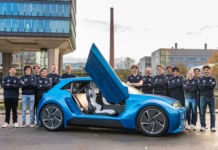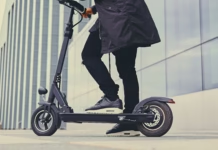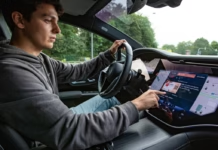Setting the Scene: The Future of Driving with Automation
As the automotive industry accelerates toward a future shaped by electric vehicles and automation, the role of Assisted Driving systems has become increasingly crucial. These technologies aim to support, not replace, human drivers by enhancing comfort, maintaining safety, and preventing collisions. According to safety watchdog Euro NCAP, these systems must walk a fine line—offering substantial support while keeping drivers alert and responsible. This balance is especially vital in electric vehicles (EVs), where innovation often races ahead of regulation. In a recent comprehensive assessment, Euro NCAP tested nine cars to evaluate how effectively manufacturers implement partially automated systems. The results were surprising and set a new benchmark for the industry.
High Performers Lead the Way in Assisted Driving
The Kia EV3, Porsche Macan, Renault 5, and Toyota bZ4X received top marks in Euro NCAP’s grading. These models earned a ‘Very Good’ rating for achieving an ideal blend of Assistance Competence and Safety Backup. Notably, the Porsche Macan stood out with its InnoDrive system, earning high praise for clear driver communication and safe operational behavior. Similarly, the Renault 5’s ‘Active Driver Assist’ showcased that affordable EVs can offer sophisticated safety features. These systems emphasize clarity, responsiveness, and seamless collaboration with the driver—key elements of effective assisted driving.
Mid-Tier Performers Show Promise but Need Refinement
The Mazda CX-80 and XPENG G9 achieved a ‘Good’ rating, reflecting solid but improvable implementation. Their systems offer decent safety features and user engagement but lack the finesse seen in the top-tier models. For example, minor usability issues or inconsistent communication of system limitations may reduce their overall effectiveness. While not unsafe, these vehicles show that there’s room to enhance the driver experience and ensure safer human-machine interaction.
Tesla and Volvo Fall Short on Driver Engagement
Surprisingly, vehicles from brands known for innovation and safety—Tesla Model S and Volvo EX30—received only a ‘Moderate’ rating. Tesla’s Autopilot, despite an impressive 94% Safety Backup score, failed to meet expectations for Assistance Competence, scoring only 30%. Euro NCAP criticized the system’s branding, arguing that terms like “Autopilot” mislead users about its true capabilities. The system also resists driver overrides and disengages abruptly, which compromises usability. Volvo’s EX30 shares similar flaws, including a poorly placed screen and a weak strategy for monitoring driver engagement. These issues undermine otherwise advanced technology and potentially increase safety risks.
Why Clear Communication and System Design Matter
The Euro NCAP tests underscore a crucial message: technology alone isn’t enough. A well-designed Assisted Driving system must work with the driver—not around them. It should clearly inform, provide backup in emergencies, and reinforce the driver’s role in maintaining control. As Adriano Palao from Euro NCAP noted, transparency and collaboration are essential. When drivers are misled or poorly informed, even the best safety systems can pose new hazards. For electric vehicles, where innovation tends to outpace regulation, this insight is especially relevant. As these systems become standard, user-centric design must be prioritized for truly safe automation.







